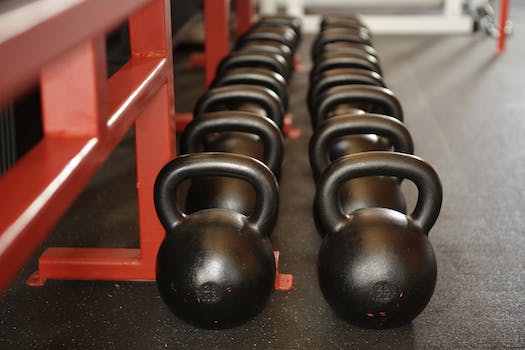How To Start A Business Gym
“Transform your passion for fitness into a successful business with these essential steps for starting a gym.”
Introduction
Starting a business gym can be a lucrative and rewarding venture for fitness enthusiasts and entrepreneurs alike. However, it requires careful planning and execution to ensure success. In this article, we will discuss the essential steps to take when starting a business gym, including market research, location selection, equipment acquisition, staffing, and marketing. By following these steps, you can create a thriving gym that meets the needs of your target audience and generates a steady stream of revenue.
Finding the Right Location for Your Business Gym
Starting a business gym can be a great way to turn your passion for fitness into a profitable venture. However, before you can start welcoming clients, you need to find the right location for your gym. Here are some tips to help you find the perfect spot for your business gym.
First and foremost, you need to consider the size of the space you need. This will depend on the type of gym you want to open and the number of clients you plan to accommodate. If you’re planning on opening a small boutique gym, you may only need a space of around 1,000 square feet. However, if you’re planning on opening a larger gym with multiple workout areas and equipment, you may need a space of 5,000 square feet or more.
Once you have an idea of the size of the space you need, you can start looking for potential locations. One option is to look for vacant commercial spaces in your area. These spaces may have been previously used as retail stores or offices, but they could be repurposed as a gym. Look for spaces that have high ceilings, plenty of natural light, and good ventilation.
Another option is to look for existing gyms that are closing down or moving to a new location. These spaces may already have the necessary equipment and infrastructure in place, which can save you time and money on renovations. However, be sure to do your due diligence and make sure the space is suitable for your needs.
Location is also an important factor to consider. You want to choose a location that is easily accessible for your clients, whether they are driving or taking public transportation. Look for spaces that are located near major roads or highways, or near public transportation hubs like train stations or bus stops.
You should also consider the demographics of the area. Are there enough potential clients in the area to sustain your business? Look for areas with a high population density and a mix of residential and commercial properties. You may also want to consider the income level of the area, as this can affect the types of services and amenities you offer.
Finally, consider the cost of the space. You want to find a space that fits within your budget, but also offers the amenities and features you need. Be sure to factor in the cost of rent, utilities, and any renovations or upgrades you may need to make to the space.
In conclusion, finding the right location for your business gym is crucial to your success. Consider the size of the space you need, the location, demographics, and cost when searching for potential locations. With the right location, you can create a thriving business that helps people achieve their fitness goals.
Equipment Essentials for Your Business Gym

Starting a business gym can be a lucrative venture, but it requires careful planning and investment. One of the most important aspects of setting up a gym is selecting the right equipment. In this article, we will discuss the essential equipment you need to start a business gym.
Cardio Equipment
Cardio equipment is a must-have for any gym. It helps members improve their cardiovascular health and burn calories. Treadmills, ellipticals, stationary bikes, and rowing machines are some of the most popular cardio equipment. When selecting cardio equipment, consider the quality, durability, and features. You want equipment that can withstand heavy usage and provide a variety of workout options.
Strength Training Equipment
Strength training equipment is essential for building muscle and improving overall fitness. Free weights, weight machines, and resistance bands are some of the most common strength training equipment. When selecting strength training equipment, consider the type of exercises your members will be doing and the space available. You want equipment that is versatile, durable, and safe to use.
Functional Training Equipment
Functional training equipment is becoming increasingly popular in gyms. It includes equipment such as kettlebells, medicine balls, and suspension trainers. Functional training equipment helps members improve their balance, coordination, and overall fitness. When selecting functional training equipment, consider the quality, versatility, and safety. You want equipment that can be used for a variety of exercises and is safe for members of all fitness levels.
Group Fitness Equipment
Group fitness classes are a great way to attract and retain members. To offer group fitness classes, you need equipment such as yoga mats, resistance bands, and stability balls. When selecting group fitness equipment, consider the type of classes you will be offering and the number of members you expect to attend. You want equipment that is durable, easy to clean, and can accommodate a variety of exercises.
Recovery Equipment
Recovery equipment is becoming increasingly popular in gyms. It includes equipment such as foam rollers, massage balls, and percussion massagers. Recovery equipment helps members recover from workouts and prevent injuries. When selecting recovery equipment, consider the quality, durability, and effectiveness. You want equipment that can withstand heavy usage and provide effective recovery benefits.
Accessories
Accessories such as towels, water bottles, and lockers are essential for any gym. They help members feel comfortable and provide a convenient workout experience. When selecting accessories, consider the quality, durability, and convenience. You want accessories that are easy to use and can withstand heavy usage.
In conclusion, selecting the right equipment is essential for starting a successful business gym. Cardio equipment, strength training equipment, functional training equipment, group fitness equipment, recovery equipment, and accessories are all essential for providing a complete workout experience. When selecting equipment, consider the quality, durability, versatility, and safety. With the right equipment, you can attract and retain members and build a successful business gym.
Creating a Business Plan for Your Gym
Starting a business gym can be a great way to turn your passion for fitness into a profitable venture. However, before you can start welcoming clients, you need to create a solid business plan. A business plan is a roadmap that outlines your goals, strategies, and financial projections. In this article, we’ll guide you through the process of creating a business plan for your gym.
1. Define Your Business Model
The first step in creating a business plan for your gym is to define your business model. Will you offer a traditional gym experience with cardio and weight equipment, or will you specialize in a specific type of fitness, such as CrossFit or yoga? Will you offer personal training services or group classes? Will you have a physical location or operate online?
2. Conduct Market Research
Once you’ve defined your business model, it’s time to conduct market research. This involves gathering information about your target market, competitors, and industry trends. You can use online resources, such as industry reports and market research databases, to gather this information. You can also conduct surveys and focus groups to gather feedback from potential clients.
3. Develop Your Marketing Strategy
Based on your market research, you can develop a marketing strategy that will help you reach your target audience. This may include social media marketing, email marketing, paid advertising, and events. You should also consider partnering with local businesses and influencers to increase your visibility.
4. Create Financial Projections
Your business plan should include financial projections that outline your expected revenue and expenses. This will help you determine how much funding you need to start your gym and when you can expect to break even. You should also consider factors such as equipment costs, rent, utilities, and staffing.
5. Determine Your Funding Needs
Once you’ve created your financial projections, you can determine your funding needs. This may include loans, grants, or investments from friends and family. You should also consider crowdfunding platforms, such as Kickstarter or Indiegogo, to raise funds from the community.
6. Develop Your Operations Plan
Your operations plan outlines how you will run your gym on a day-to-day basis. This includes staffing, scheduling, and equipment maintenance. You should also consider safety protocols and emergency procedures.
7. Set Your Goals and Milestones
Finally, you should set your goals and milestones for your gym. This may include reaching a certain number of clients, generating a certain amount of revenue, or expanding to multiple locations. You should also set milestones to track your progress and adjust your strategies as needed.
In conclusion, creating a business plan for your gym is a crucial step in starting a successful business. By defining your business model, conducting market research, developing your marketing strategy, creating financial projections, determining your funding needs, developing your operations plan, and setting your goals and milestones, you can create a roadmap for success. With hard work and dedication, you can turn your passion for fitness into a thriving business.
Marketing Strategies for Your Business Gym
Starting a business gym can be a challenging but rewarding venture. Once you have your gym set up, it’s time to start thinking about marketing strategies to attract new members and grow your business. Here are some tips to help you get started.
Firstly, it’s important to identify your target market. Who are you trying to attract to your gym? Are you targeting athletes, fitness enthusiasts, or people who are new to exercise? Once you have a clear understanding of your target market, you can tailor your marketing strategies to appeal to them.
One effective marketing strategy is to offer a free trial or introductory offer. This allows potential members to try out your gym before committing to a membership. You can advertise this offer on your website, social media pages, and local community boards. Make sure to include the details of the offer, such as the length of the trial and any restrictions.
Another way to attract new members is to offer referral incentives. Encourage your current members to refer their friends and family to your gym by offering them a discount on their membership or other rewards. This not only helps to bring in new members but also strengthens the sense of community within your gym.
Social media is a powerful tool for marketing your business gym. Create social media pages for your gym and regularly post updates, photos, and videos of your gym and its members. You can also use social media to run promotions and contests, such as a free month of membership for the person who shares your post the most.
Partnering with local businesses can also be a great way to market your gym. Reach out to nearby health food stores, sports stores, and other fitness-related businesses to see if they would be interested in partnering with you. You can offer their customers a discount on their membership in exchange for promoting your gym to their customers.
Hosting events and workshops can also help to attract new members to your gym. Consider hosting a fitness challenge or a nutrition workshop to bring in new members and provide value to your current members. You can advertise these events on your website, social media pages, and local community boards.
Finally, don’t forget about the power of word-of-mouth marketing. Encourage your current members to share their positive experiences at your gym with their friends and family. This can be as simple as asking them to leave a review on your website or social media pages.
In conclusion, marketing your business gym requires a combination of strategies tailored to your target market. Offering free trials, referral incentives, and partnering with local businesses can all help to attract new members. Social media, events, and word-of-mouth marketing are also powerful tools for growing your gym. With a little creativity and effort, you can build a strong community of members and grow your business gym.
Hiring and Training Staff for Your Business Gym
Starting a business gym can be a challenging but rewarding venture. One of the most important aspects of running a successful gym is hiring and training the right staff. Your staff will be the face of your gym and will play a crucial role in creating a positive and welcoming environment for your members. In this article, we will discuss some tips on how to hire and train staff for your business gym.
Hiring Staff
When it comes to hiring staff for your gym, it is important to look for individuals who are passionate about fitness and have a positive attitude. You want to hire people who are knowledgeable about fitness and can provide guidance and support to your members. Here are some tips on how to hire the right staff for your gym:
1. Look for experience: When hiring staff for your gym, it is important to look for individuals who have experience in the fitness industry. Look for candidates who have worked in a gym or have a background in personal training.
2. Conduct interviews: Conducting interviews is a great way to get to know your candidates and assess their skills and experience. During the interview, ask questions about their fitness background, their experience working with clients, and their approach to customer service.
3. Check references: Checking references is an important step in the hiring process. Contact the candidate’s previous employers and ask about their work ethic, reliability, and customer service skills.
Training Staff
Once you have hired your staff, it is important to provide them with the necessary training to ensure they are equipped to provide the best possible service to your members. Here are some tips on how to train your staff:
1. Provide ongoing training: Training should not be a one-time event. It is important to provide ongoing training to your staff to ensure they are up-to-date on the latest fitness trends and techniques.
2. Focus on customer service: Customer service is a crucial aspect of running a successful gym. Make sure your staff is trained to provide excellent customer service and to handle any customer complaints or issues.
3. Encourage teamwork: Encourage your staff to work together as a team. This will help create a positive and supportive environment for your members.
4. Lead by example: As the owner of the gym, it is important to lead by example. Make sure you are setting a good example for your staff and members by maintaining a healthy and active lifestyle.
In conclusion, hiring and training staff for your business gym is a crucial aspect of running a successful gym. By hiring passionate and knowledgeable staff and providing them with ongoing training, you can create a positive and welcoming environment for your members. Remember to focus on customer service, encourage teamwork, and lead by example. With the right staff in place, your gym can become a thriving and successful business.
Conclusion
Starting a business gym requires careful planning, research, and investment. It is important to identify your target market, location, equipment, and services to offer. You also need to create a business plan, secure funding, and obtain necessary licenses and permits. Building a strong brand, marketing strategy, and customer service are also crucial for success. With dedication, hard work, and a passion for fitness, starting a business gym can be a rewarding and profitable venture.






